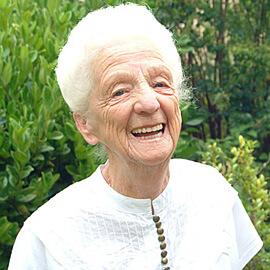Osteoporosis is a condition in which bones become fragile and brittle, leading to a higher risk of fractures than in normal bone. It occurs when there is a loss of bone mineral density. In Australia, someone is admitted to hospital every five to six minutes with an osteoporotic fracture and this figure is expected to rise to every three to four minutes by the year 2021, as the population ages.
Like a good bottle of wine, we can all expect to get better with age.
Or we'd like to think so! But it pays to plan for a long and healthy life by looking after your bones. Here's how you can reduce the risk of developing osteoporosis.
What is osteoporosis?
Osteoporosis is a condition in which bones become fragile and brittle, leading to a higher risk of fractures than in normal bone. It occurs when there is a loss of bone mineral density. In Australia, someone is admitted to hospital every five to six minutes with an osteoporotic fracture and this figure is expected to rise to every three to four minutes by the year 2021, as the population ages.
Osteoporosis is often called the ‘silent disease' as there are usually no signs or symptoms until a fracture occurs, most commonly in the hip, wrist, spine, ribs and pelvis. One in two women and one in three men over 60 years will have an osteoporotic fracture in Australia.
The risk factors
Osteoporosis risk factors fall into two categories: modifiable and fixed. Modifiable risk factors arise because of unhealthy diet or lifestyle choices, including:
- Poor nutrition
- Low body mass index
- Eating disorders
- Alcohol
- Smoking
- Insufficient exercise
Fixed risk factors are those that one is born with or cannot change, including:
- Age
- Gender - hormonal changes at menopause make it more common in women
- Family history
- Previous fracture
- Race / ethnicity - Caucasian and Asian peoples are more prone.
- Menopause / hysterectomy
- Low testosterone in men
Secondary factors including diseases and conditions such as rheumatoid arthritis and asthma, and medications like corticosteroids or high-dose thyroid hormone treatment, can have a negative impact on bone health.
How you can ‘beat the break'
Professor Peter Ebeling, Head of Endocrinology at Melbourne's Western Hospital, says the key is to identify whether you are at risk, and to consider strategies to prevent the onset of osteoporosis with your GP.
As a guide, Prof. Ebeling suggests the following prevention plan for the 50-plus age group, based on the latest research published in Medicine Today in January 2007 and in the Osteoporosis Australia Calcium, Vitamin D and Osteoporosis Guide (2nd Edition).
Calcium intake of 1000mg a day (or 1300mg a day if you are a woman over the age of 50 or a man over the age of 70, or suffer osteoporosis).
Adequate intake of vitamin D - the current recommendation is at least 400 -800IU a day.
Weight-bearing exercise. Walking is not enough; you will need to incorporate short bursts of higher intensity exercise including stepping, skipping, jumping, dancing, or medium-impact aerobics four times per week.
Resistance exercise - weight lifting or strength training. You will need to lift and lower light-to-moderate weights slowly to target specific muscle groups.
For the 70-plus age group, Prof. Ebeling advises participation in exercise like tai chi to improve balance. If you're at home, try balancing while placing a pillow under your feet, or tandem walking, also known as heel-to-toe walking.
Bear in mind it is important to seek professional guidance before starting any exercise program.






